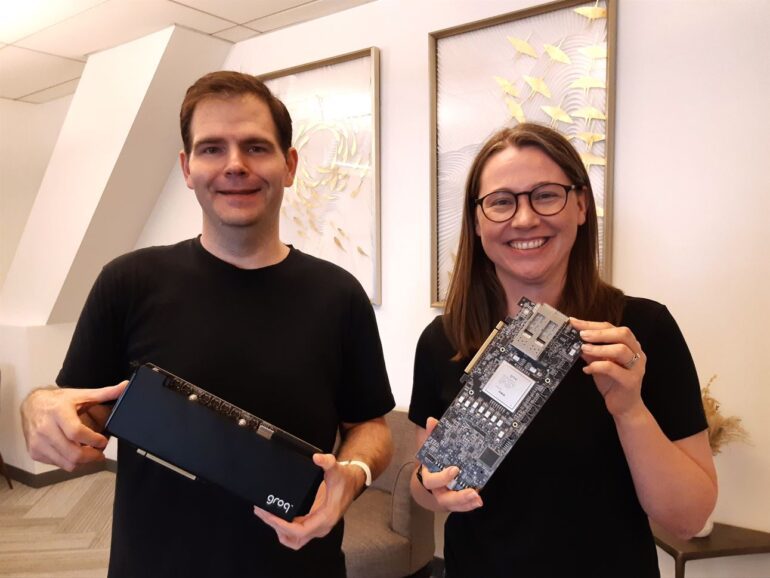TL;DR:
- Groq repurposes its original AI inference chip into a Language Processing Unit (LPU).
- Demonstrates Meta’s Llama-2, a 70-billion–parameter LLM, running at 240 tokens per second per user.
- Achieves this feat on their 10-rack (64-chip) cloud-based development system, utilizing 4-year-old AI silicon.
- Focus shifts toward the burgeoning market for Large Language Model (LLM) inference.
- Market demand for LLM inference grows, thanks to the popularity of models like ChatGPT.
- Fine-tuning gains prominence, reducing the need for extensive model training.
- Groq’s adaptability and strategic focus position them for success in the evolving data center AI landscape.
Main AI News:
Groq, a pioneer in AI hardware, has swiftly repositioned its inaugural AI inference chip as a Language Processing Unit (LPU), marking a strategic move towards harnessing the burgeoning potential of large language models (LLMs). In a remarkable showcase of technological prowess, Groq unveiled the staggering capabilities of Meta’s Llama-2, a 70-billion–parameter LLM, achieving an impressive 240 tokens per second per user during inference tasks.
Jonathan Ross, the visionary CEO of Groq, shared with EE Times that the company seamlessly integrated Llama-2 into its 10-rack (64-chip) cloud-based development system in a mere matter of days. What’s truly astounding is that this system is founded on Groq’s original AI silicon, introduced to the world four years ago.
Ross emphasized the strategic focus on the LLM landscape, stating, “We are committed to seizing the LLM opportunity. This endeavor aligns perfectly with our core competencies and has opened up exciting prospects for us.”
The soaring demand for LLM inference, catalyzed by the popularity of transformative models like ChatGPT, is compelling data center AI chip companies to showcase their cutting-edge technologies tailored for new LLM workloads. Ross elucidated that Groq’s primary market—data center AI inference—is poised for exponential growth, especially with the increasing adoption of fine-tuning techniques. Fine-tuning, which significantly reduces the necessity for training models from scratch, has rapidly gained favor in the industry.
He further expounded, “Today, fine-tuning can be accomplished swiftly on standard laptops, rendering traditional training a diminishing market. In fact, one of our prominent infrastructure clients informed us that their revenue from training has been on a downward trajectory, contrary to their initial projections.“
Conclusion:
Groq’s rapid transformation into a Language Processing Unit (LPU) provider, along with its impressive performance in running Meta’s Llama-2 large language model (LLM), demonstrates the company’s adaptability and potential for growth. With the LLM inference market on the rise, particularly in data centers, and the diminishing relevance of traditional training in favor of fine-tuning, Groq is strategically positioned to capitalize on this evolving landscape. This strategic pivot underscores the importance of innovation and responsiveness in the dynamic AI industry, positioning Groq as a key player in shaping the future of AI hardware.

